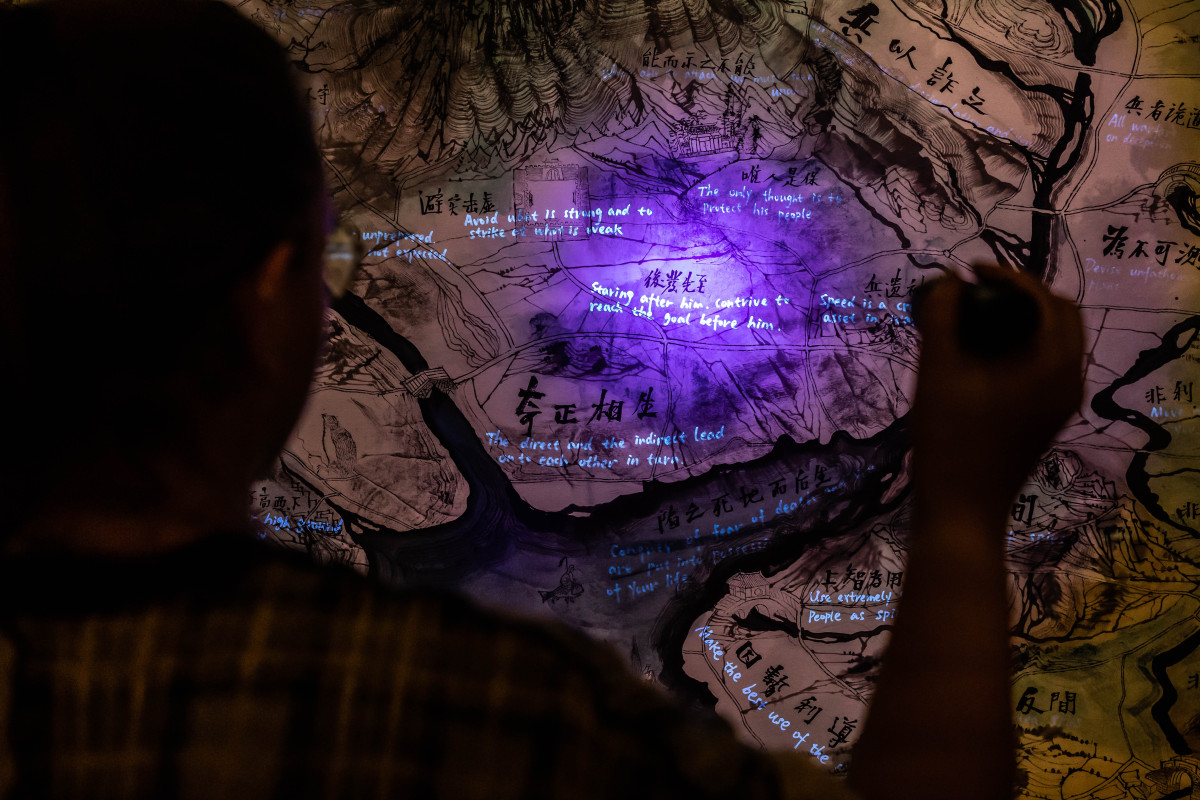Workshop in Talbot Rice Gallery
Curating an exhibition involves four stages: developing a theme, identifying relevant artists and artwork, installing the artwork, and opening to the public. Each stage of curation is crucial and interconnected, requiring curators to carefully coordinate the relationship between the artwork, the spaces, and the audience.
As an audience member, I rarely consider how and where artwork is placed. I simply move from one piece to another, following the carefully designed route of the exhibition created by the curators. However, as a curator, I must make decisions on how to best display various types of artwork in different gallery spaces.
During our visit to Talbot Rice Gallery today, we observed five distinct spaces with unique features. For instance, the lobby (Image 1) with its large windows and high ceiling provides an open and flexible space that can accommodate a large number of people and is suitable for showcasing large-scale installations. This is why Lara Favaretto’s Momentary Monument is exhibited here. However, it is also important to consider the issue of echo and the limitations of the lift, as they can impact the installation.

On the opposite side of Lara Favaretto’s exhibition, we encountered a completely different space (Image 2). In contrast to the previous room with abundant natural light, this room with classic columns relies more on artificial lighting, creating a more serious atmosphere. I believe that the more distinctive the style of the building, the more the curator needs to carefully consider the relationship between the environment and the artwork. The curator must search for artwork that fits well within the constraints of these columns, which cannot be moved or altered.
What impressed me the most was the upstairs area of this room, which featured two long and narrow corridors facing each other. The presence of pillars also served as a reminder for viewers to maintain an appropriate distance from the artwork. The one-way path allowed the audience to navigate without having to consider which direction to take, enabling them to fully focus on the artwork. I also believe that this space is well-suited for exhibiting a series of works, as it allows viewers to gain a comprehensive understanding of the artists’ concepts by viewing all the works in sequence.

In addition to my thoughts on the appropriate placement of artworks within a spatial context, I would like to highlight the display of Qiu Zhijie’s work in this locale. In the wider context of contemporary art being shown in Edinburgh and Scotland, the inclusion of Qiu Zhijie as a Chinese artist whose works are showcased and esteemed in Edinburgh adds to the diverse and vibrant landscape of art exhibitions in the region. The thoughtful addition of English translations to his works facilitates comprehension for viewers. From my perspective, featuring artworks from artists of different nationalities in this setting provides audiences with diverse perspectives and enables them to gain insights into cultures from around the world through the medium of art.


